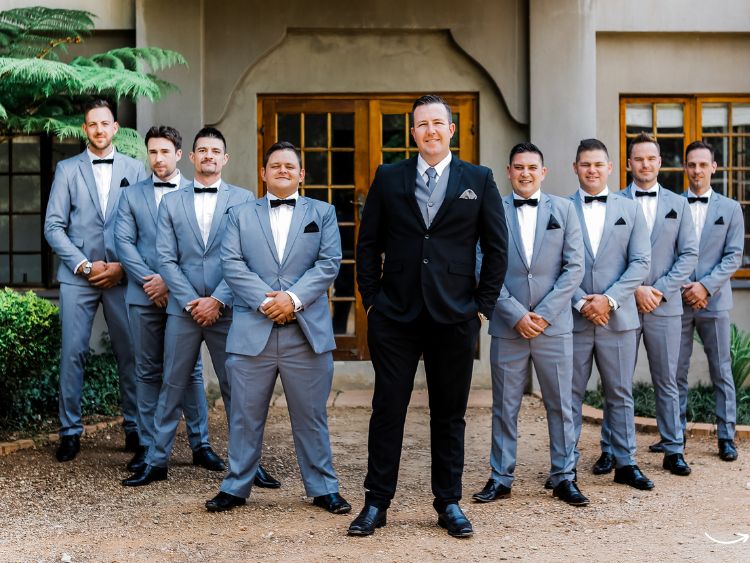Semi-Formal vs Formal: Decoding the Dress Codes for Every Occasion
Dress codes can be tricky, can’t they? You get an invitation that says “semi-formal” or “formal,” and suddenly, your wardrobe feels like a mystery. Should you pull out that sleek tuxedo or is a polished suit good enough? The confusion between semi-formal and formal attire is common, but understanding the difference can save you from any fashion faux pas. In this article, we’ll break down the nuances between semi-formal and formal dress codes, so you can walk into any event with confidence and style.
What is Semi-Formal Attire?
Semi-formal attire is a dress code that’s more relaxed than formal wear but still requires a polished and sophisticated look. Think of it as a middle ground between casual and formal. The idea is to look sharp without going over the top. But what exactly does that mean?
Men’s Semi-Formal Attire
For men, semi-formal attire often includes:
- Suits: A well-tailored suit is your best bet. It can be in a variety of colors, but navy, gray, or black are the most versatile.
- Dress Shirt: A crisp, collared shirt is a must. White is classic, but light blue or other muted tones work too.
- Tie or Bow Tie: Optional, depending on the event. If you choose a tie, opt for a conservative pattern.
- Shoes: Leather dress shoes, preferably oxfords or loafers.
Women’s Semi-Formal Attire
Women have a bit more flexibility in semi-formal attire. Options include:
- Dresses: A cocktail dress or a chic knee-length dress is ideal. Avoid anything too short or too long.
- Separates: A stylish blouse paired with a midi skirt or tailored pants.
- Shoes: Heels or elegant flats. Stick to closed-toe options for a more refined look.
- Accessories: Keep it minimal. A clutch and understated jewelry are perfect.
What is Formal Attire?
Formal attire, as the name suggests, is the most sophisticated and polished dress code. This is the level of dressing you’d expect at black-tie events, galas, or weddings. It’s all about elegance and making a statement with your ensemble.
Men’s Formal Attire
When the invitation says formal, men should consider:
- Tuxedo: The classic choice for formal events. A black or midnight blue tuxedo with a satin lapel is a safe bet.
- Dress Shirt: A white, pleated dress shirt, usually with a wing or pointed collar.
- Bow Tie: A black bow tie is traditional, though some opt for other dark colors.
- Cummerbund or Waistcoat: These add an extra touch of formality to the tuxedo.
- Shoes: Patent leather oxfords or formal loafers are essential.
Women’s Formal Attire
For women, formal attire usually means:
- Evening Gowns: Floor-length gowns are the go-to for formal events. Choose luxurious fabrics like silk, velvet, or chiffon.
- Accessories: Glamorous jewelry, an elegant clutch, and possibly gloves for an added touch of sophistication.
- Shoes: High heels, preferably in classic colors like black, nude, or metallics.
Key Differences Between Semi-Formal and Formal Attire
So, what sets these dress codes apart? The distinction lies in the level of formality and the details of the attire.
- Occasions: Semi-formal attire is suitable for events like cocktail parties, business dinners, and some weddings. Formal attire is reserved for black-tie events, galas, and high-end weddings.
- Outfit Complexity: Formal attire requires more elaborate clothing—think tuxedos and evening gowns—while semi-formal allows for a bit more freedom and simplicity.
- Fabric Choices: Formal attire often involves richer fabrics like velvet, silk, or satin, while semi-formal attire can include lighter materials like cotton blends and wool.
- Accessories: In formal wear, accessories are often more pronounced, with more substantial jewelry and additional pieces like cummerbunds and gloves. Semi-formal accessories are typically understated and minimal.
When to Choose Semi-Formal vs Formal
Deciding whether to go semi-formal or formal depends on the event and its level of sophistication. Here’s a quick guide:
- Weddings: If the invitation says black-tie, go formal. For afternoon or outdoor weddings, semi-formal is usually appropriate.
- Business Events: High-profile company dinners or award ceremonies may call for formal attire, but most business events are semi-formal.
- Parties: Holiday parties or charity events might specify formal attire. Cocktail parties generally lean toward semi-formal.
How to Transition from Day to Night: Semi-Formal to Formal
Sometimes, you might be in a situation where you need to transition from a semi-formal event during the day to a formal event at night. How do you make that switch?
- Men: Start with a well-tailored suit for the semi-formal part of your day. To transition to formal, swap your suit for a tuxedo jacket, add a bow tie, and switch to patent leather shoes.
- Women: A cocktail dress can serve as your semi-formal attire. To elevate it for a formal event, consider adding more dramatic jewelry, changing to a pair of higher heels, and throwing on a shawl or stole.
Common Mistakes in Semi-Formal and Formal Attire
Even with the best intentions, mistakes can happen. Here are a few common pitfalls to avoid:
- Overdressing for Semi-Formal Events: It’s easy to go overboard and show up in attire that’s too formal. Stick to suits for men and cocktail dresses for women to avoid looking out of place.
- Underdressing for Formal Events: On the flip side, showing up underdressed at a formal event can be equally awkward. If in doubt, always lean towards being slightly overdressed than underdressed.
- Ignoring the Invitation: Always pay close attention to what’s written on the invitation. If it specifies a dress code, follow it to the letter.
FAQs
Q: Can I wear a tie to a semi-formal event?
A: Yes, you can, but it’s not always necessary. If you do wear one, keep it simple and elegant.
Q: Is it okay to wear flats to a formal event?
A: While heels are preferred for women, you can wear elegant flats if they complement your outfit and are suitable for the occasion.
Q: What’s the difference between semi-formal and cocktail attire?
A: Cocktail attire is a type of semi-formal attire. It’s generally more playful and less conservative than other forms of semi-formal wear.
Q: Can men wear a black suit to a formal event?
A: A black suit is more appropriate for semi-formal events. For formal occasions, a tuxedo is usually expected.
Q: Are accessories important in distinguishing between semi-formal and formal?
A: Absolutely. The choice of accessories can significantly elevate an outfit from semi-formal to formal.
Conclusion
Understanding the difference between semi-formal and formal attire doesn’t have to be confusing. By keeping the key distinctions in mind—like the level of formality, occasion, and outfit complexity—you can easily navigate any dress code with style. Whether you’re attending a wedding, a business event, or a gala, knowing how to dress appropriately will not only make you look good but also feel confident. So the next time you see “semi-formal” or “formal” on an invitation, you’ll know exactly what to do!







